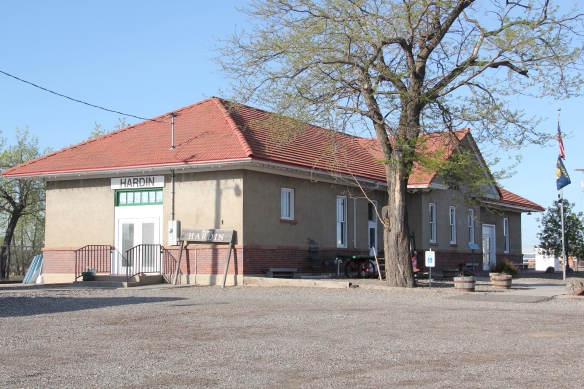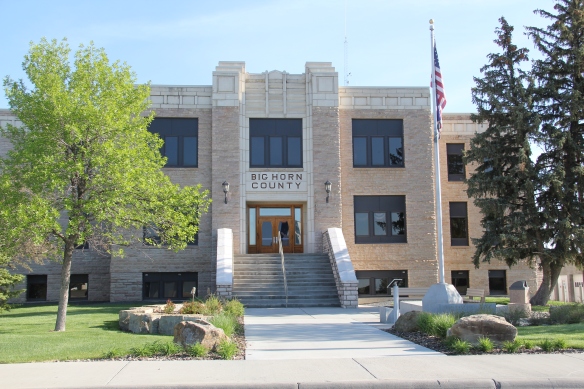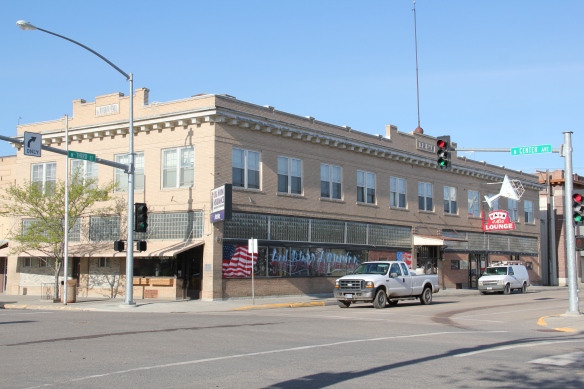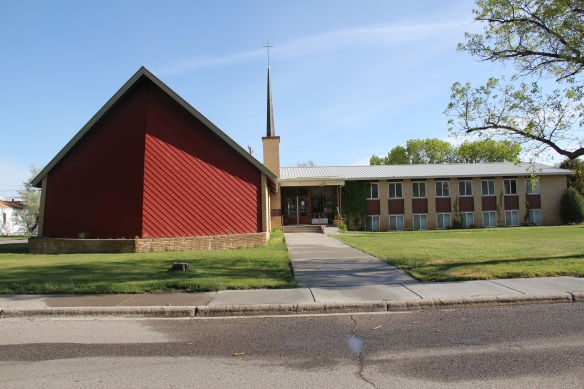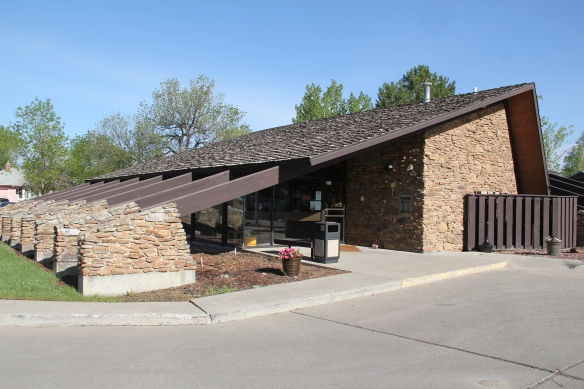Hardin is different than so much of eastern Montana It was created along the Burlington Route–a railroad line that entered the state in the early 20th century and headed north to Billings–and not the three dominant lines of the region: the Great Northern, the Northern Pacific, and the Milwaukee Road. Its town plan is different: streets radiate out from the depot, the centerpiece of the design, although tradition soon overruled design: businesses soon adapted the plan into the standard T-town look that you find throughout the region.

From the depot, looking northwest, the Hotel Becker, also in the National Register, is the town’s most recognized landmark from its first decade of development.

To the northeast of the depot, the street soon took on the look of an alley as owners adapted the plan to the preferred T-town look of a proper “Main Street.”
Hardin is also different because like its huge neighbor to the north, Billings, Hardin’s demographic story is not one of a boom in the early twentieth century followed by decades of declining population. When I first visited in the early 1980s, the town’s population had grown by one thousand since the 1950s, and it has even grown a couple of hundred more since then, rather than the story so often documented in this blog of rather steep declines in eastern Montana towns from 1980 to 2010. Hardin even weathered the closing, and now slow demolition, of its industrial mainstay, the Holly Sugar Refinery, which dominated the skyline and local industry from its opening in 1937 to its closing in the early 1970s.
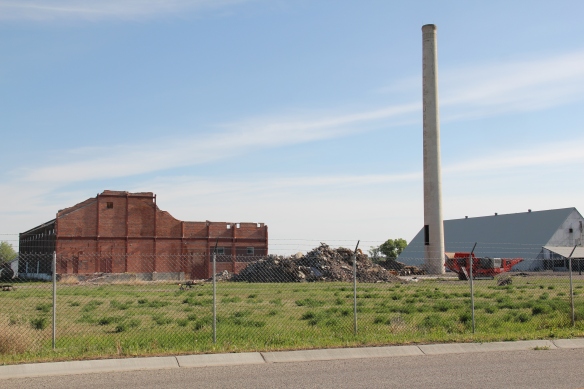
The refinery, shown here in 2013, is just east of the town proper and has served as a major landmark for travelers on I-94.
The opening of the refinery in the Depression decade also coincided with yet another trend that makes Hardin different: its impressive collection of modernist designs, which started with the magnificent Big Horn County Courthouse.
The courthouse was constructed between 1937 and 1938 as a Works Progress Administration (WPA) effort; J. G. Link of Billings was the architect, as the firm was for so many New Deal projects in the region. The courthouse is the state’s most successful blending of regional materials with standard WPA Modern design. South of Hardin is the Big Horn Canyon, a beautiful deep gorge that frames the river. The striking stonework of the courthouse came from a quarry near Fort Smith and linked the modern courthouse to the local landscape.
Over the next two generations, and into the present, the town has continued to grace its built environment with interesting examples of modern design. Some naturally reflect the Art Deco styling of the courthouse. The entrance to the Community Bowling Alley is very mid-century Deco, and other commercial buildings have a hint here and there of Deco styling, especially in the use of a band of glass block windows on the historic Gay Block.
What really is really impressive in Hardin are several buildings from Montana’s contemporary era of the 1950s and 1960s, first in commercial buildings and storefronts, especially the metal-clad and International style-influenced Zelka Machine Shop.
Two congregations also caught the modernist favor. The Methodist built a rectangular brick International styled-influenced sanctuary while the Congregationalists added an almost Saarinen-esque design to the townscape.
Nor did residents ignore domestic architecture styles, either in the past, as attested by this Prairie-style dwelling, or in the present, as in the recent Neo-Prairie style addition to the formerly classical-styled town library.
Perhaps the best comes last in the dramatic lines and stone aesthetic of the First Interstate Bank Drive-In Bank, located between the town’s commercial artery and its residential district, or the slashed up quonset-hut vernacular of a car wash located on the outskirts of town. Whatever look you like of Montana modernism, Hardin has something that touches on that design aesthetic.

